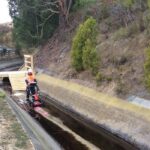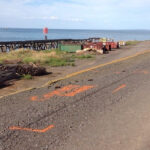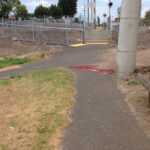Many times you might have heard that induction should be used only as a last resort. In most of the cases, that’s a good thumb rule to follow, but when you need to use it, it’s extremely important to be aware of the technical know-how. There are times when an inductive locating method is the only option and other times when only induction can help reduce interferences. Unfortunately, over time, inductive locating hasn’t been considered highly reliable. But is that completely true?
Here, we will help you gain a thorough understanding of the inductive locating, when you need to use it, how it is helpful and why it is the future of the underground cable location. Let’s ponder deeply:
Everything You Need to Know About Very High-Frequency Inductive Locating Method
Nowadays, the underground cable and pipe locators use frequencies ranging from 100Hz to 480 kHz. Earlier cables and pipes with a frequency of 80 kHz were considered very high in the pipe locating industry. However, presently, frequencies ranging from 400 kHz to 490 kHz are considered very high. Frequencies higher than this can cause distress in the FCC.
In an inductive locating method, energy from the transmitter’s antenna is transferred to the underground utility without metal to metal connection. It is one of the best methods to make the current flow in the circuit when you are not able to make a direct connection to the utility.
However, in an underground complex maze where water cables, TV cables, water control circuits and gas pipes are buried nearby, one should avoid using an inductive locating method. This is because the signal will be applied to all the surrounding suburbs, which may cause confusion during the trace.
Why Inductive Locating is not preferred by Most of the Utility Locators?
- It creates confusion – That’s not the reality. In fact, very high frequencies can get onto most of the conductors, including adjoining lines and difficult to trace lines. One can even determine which conductor gets the most signal and creates the best locating circuit.
- Only novice, unskilled locators use inductive locating – It requires in-depth knowledge of utility locating principles and advanced underground pipe locating skills to locate well in a complex scenario. The truth is that it makes cable fault finding and pipe locating easier and more accurate.
Is Very High-Frequency Conductive Locating Advantageous?
Without any doubt! The only way to prevent damage is to identify what lies underground. Sometimes, there is not sufficient signal or direct connect to trace a cable location. Such areas are often labelled as unlocatable. This is where, very high frequency inductive locating can come to rescue.
Every utility locator is well aware of the fact that not every line is marked for safe digging. So what does an excavator supposed to do in such a scenario? Take help of the very high frequency inductive locating technology – the perfect way to avoid lines that aren’t marked.
Applications of Very High-Frequency Inductive Locating:
- Locate cable or tape that is broken, inaccessible or deteriorated
- Energized power lines
- Inaccessible fibre optic cables
- Locating unmarked private facilities
Very High-Frequency Conductive Locating is the Future of Damage Prevention!
The common purpose of underground cable location or cable fault finding is safer digging and fewer damages. For this, it is crucial to find all the conductors and unmarked lines. Very high frequency inductive locating can help us achieve this goal.
After adopting this technology, many excavators, major distribution underground utilities and others have experienced safer digging and lesser damages.
Final Takeaway:
Very high frequency inductive locating is the skill to be mastered. The question is not that if this method is good or bad, the question is that whether this method is appropriate for a particular task or not. And when it comes to safer digging, this method has proven to be highly beneficial to complete the job.






